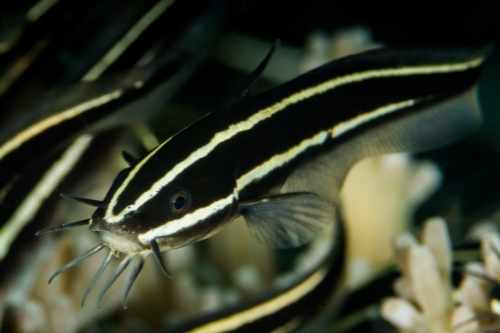Catfish are typically good eats, but most individuals think of freshwater catfish when they think of these fish. Freshwater catfish are lovely; however, there are also saltwater catfish.
Many people consider saltwater catfish edible, and it should be noted that many people loathe the flavor and consistency. Most individuals ignore eating saltwater catfish; however, that doesn’t imply you can’t or must not try it.
Table of Contents
Is Saltwater Catfish Poisonous or Edible?
Because it has exceedingly sharp spines on its back that exude venom or poison, saltwater catfish is poisonous.
These deadly spikes or barbs are only meant to be used for self-defense. When a saltwater catfish is attacked, it will erect its spines and attempt to sting its enemy. The sting of a saltwater catfish is similar to that of a bee, but it is usually more intense.
This does not imply that a saltwater catfish is dangerous or inedible. Said, you’re not going to eat those brittle spines. The meat of the saltwater catfish is completely edible and non-poisonous, so as far as you don’t consume the spines, you should be alright.
For that reason, you’ll need to understand how to slice and cook this fish.
Do Saltwater Catfish Have a Delectable Flavor?
It is primarily a matter of personal preference. However, it is essential to know that saltwater catfish should have a moderate flavor if it resides in fresh water and consumes a lot of fresh live meals.
Most people describe it as tasting similar to other saltwater fish with white meat, but milder and with a hint of ocean salty. Saltwater catfish are said to have a flavor similar to ocean trout. Nevertheless, if the catfish lived in unclean waters or ate a bunch of trash, as catfish frequently do, the flavor will most likely be very intense, muddy, and stinky.
Saltwater Catfish Species
There are several different species of saltwater catfish, but there are two extremely common ones that most people are familiar with.
Sail Catfish
Sail Catfish, Sailcats, and Sailtop Catfish are names by which this fish is known along the Atlantic coast, with a habitat that coincides with the hardhead catfish and reaches south to the Caribbean Sea. Their long forked tail and dorsal spine of the same name, which contains a characteristic fleshy extension, set them apart from other types of fish.
This variety of catfish is typically smaller than the other saltwater catfish, weighing in at roughly 0.9 kilograms on average, though a 4.5 kg sail catfish has been discovered. The sail catfish rarely reaches a length of more than 40 cm.
The spines on this fish’s back are highly venomous and can cause significant injury if touched. The sting of this type of catfish is reported to be excruciatingly painful.
Sail catfish tend to stay close to the shore in shallows that provide shelter from bigger predators, such as mangroves and lagoons. They are particularly fond of regions with structure, such as reefs, jetties, and piers.
Hardhead Catfish
This hardhead catfish can be found all along the eastern coastlines of the United States and Canada, from the northwest Atlantic to the Gulf of Mexico, and in the Keys and southern Florida.
The term comes from the complex, bony plate that runs from beyond the dorsal fin to between the eyes. Although they can grow to be 71 cm long and weigh over 5.4 kg, the length, on average, is typically between 0.45 and 1.36 cm.
Near-shore waterways, river mouths, and brackish estuaries with muddy or sandy bottoms are the hardhead catfish’s principal habitat. During the winter, they migrate to deeper water and rarely access freshwater.
Hardhead catfish have four barbells or spikes under the jaw, like other catfish. The barbs on a hardhead catfish, on the other hand, are exceedingly complex and robust, unlike those on other catfish. Even if you’re wearing heavy gloves, these spikes are capable of doing a lot of harm.
How to Cook Saltwater Catfish?
You can pan-fry, bake, or grill saltwater catfish, though most individuals feel that frying is the finest way to use with catfish. With that stated, personal taste is a factor, and some individuals prefer grilled catfish with lemon juice over deep-fried fish with a specific type of sauce.
How to Clean Saltwater Catfish?
Most catfish cleaning specialists think that the easiest way to do it is to keep holding the catfish’s head in one hand and make an extended, straight cut from head to tail along a side of the spine with a really sharp knife, taking great care to prevent the deadly spikes.
After you’ve made the initial incision, take the skin away from the meat and slice it into filets like any other fish. However, before you do anything else, you should cut into the belly and remove all of the innards and intestines, just as you would with any other type of fish.

